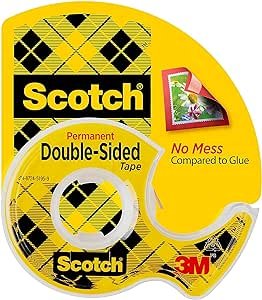all about glue
which glue to use? a sticky question!
I believe that the choice of glue is a very personal thing. For example, I’m USELESS with a glue stick, I just make a lumpy, smeary mess!
I suggest experimenting with different types of glue and finding what works best for you. Your choice my depend on ease of use or paper quality.
Not all glues are created equal, even within the categories. Different brands and applicators affect the overall experience. Look for archival or acid free glue to ensure the longevity of your work.
types of adhesives
glue sticks
The old trusty! Quite a dry type of glue. They are cheap and easy to use and give you time to reposition elements. They shouldn’t warp your paper but can leave lumps underneath if you’re not careful with your application
PVA glue
Think ‘school glue’. When applied sparingly with a brush, PVA glue can be good for large areas and small details. It is wet and may cause some warping of the paper if applied too liberally
double sided tape
Double sided tape is clean and easy to use. Simply cut off the desired length and stick!
wheat paste
Wheat paste is often used for street art or larger areas. It can be made at home by mixing of flour and water. Here is a recipe and how to
glue tape
Glue tape, my personal favourite, comes in repositionable or permanent options. A dry glue, it offers a clean way to stick but doesn’t play well with vintage papers. The permanent tape grabs instantly so be careful! The applicator takes a bit of getting used and can be tricky for small details
glue pens
Glue pens have a fine tip and are great for detailed work. They’re a wet glue so be careful not to apply too much!
glue dots
You can find glue dots in repositionable and permanent options. They are clean and easy to use
mod podge
Mod Podge is a crafting classic. It can be applied with a brush or foam applicator and can be used to both glue and seal your work. You can find different finishes, from matte to gloss
spray adhesives
Spray adhesives are great for larger areas. They are repositionable for about 10 minutes. They won’t warp or wrinkle your paper when applied sparingly. Always use spray glue in a well ventilated area
sticky foam pads
Sticky foam pads can be a great way to create depth in your collages. They are double sided with adhesive and the foam in between allows the element to sit slightly proud of the base
Let me know in the comments if this breakdown has made you think differently about glue! There are no wrong choices, it’s entirely personal. And remember, different glues and applicators may take some getting used to, practice makes perfect!










